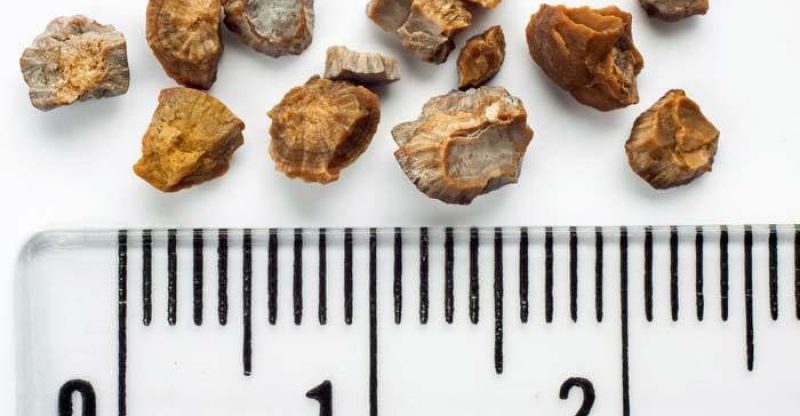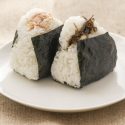What’re the Uses of Potassium Citrate (E332) in food and How it Works to Treat Kidney Stones?

3 Types | Production | Uses | Safety
Potassium citrate, the potassium salt of citric acid, commonly refers to tripotassium citrate when we talk about it.
This ingredient is usually used as a buffering agent, flavoring agent, sequestrant, sodium citrate alternative, emulsifying salt, and potassium supplement in food & beverage with the European food additive number E332(ii). In pharmaceutical uses, it is intended to prevent the formation of kidney stones.
Three Types of Potassium Citrate
Same with sodium citrate, as there are three carboxyl groups in the molecule of citric acid, potassium citrate exists in three types (monopotassium, dipotassium and tripotassium citrate) according to the partial or complete neutralization of carboxyl groups.
Only mono- and tripotassium citrate are approved as food additives, and here we do not talk dipotassium citrate.
Monopotassium citrate
Also known as potassium citrate monobasic, the anhydrous monopotassium salt of citric acid, it is much acidic and used less in food.
| Chemical formula | C6H7O7K |
| Molecular weight | 230.21 |
| CAS number | 866-84-2 |
| E number | E332(i) |
| PH | 3.5 to 3.8 (1 % aqueous solution) |
Tripotassium citrate
Also known as potassium citrate tribasic, the monohydrated tripotassium salt of citric acid.
| Appearance | White, hygroscopic, granular or powder, with a slightly sour taste. |
| Solubility | Very soluble in water, insoluble in ethanol |
| Chemical formula | C6H5O7K3·H2O |
| Molecular weight | 324.42 |
| CAS number | 6100-05-6 |
| E number | E332(ii) |
| PH | 7.5 to 9.0 (5 % aqueous solution) |
How is Potassium Citrate made?
It occurs naturally in foods, especially in fruits. However, in commercial production, it is chemically synthesized by the reaction between citric acid and potassium hydroxide or potassium carbonate.
What’re the Uses of Potassium Citrate?
Potassium citrate is a multi-functional ingredient that is suitable for use in a variety of food and pharmaceuticals.
Food
Its main function in food and beverage as follows:
Flavoring agent
Providing a balanced tart flavour by offering a sour taste and lowering the acidity in food and carbonated soft drinks. It does not add bitterness that other salts does. Plus, it can also mask the metal taste of artificial sweeteners in diet sodas.
Buffering agent
It regulates PH by reducing the acidity of foods, such as in almond milk.
Emulsifier
It prevents the separation of oil and water parts of cheese and gives the cheese a consistent texture.
Preservative
Preventing food spoilage due to its alkaline PH and therefore extend food shelf life.
Sodium citrate replacement
Can be used to formulate low sodium or sodium free foods. The reduction of sodium intake lowers blood pressure. Meanwhile, the more intake of potassium, the more sodium can be released in urine.
Potassium supplement
It is a mineral substance as a nutritional source of potassium ion.
Beverage
Food grade potassium citrate can be used to adjust PH to maintain the acidity, fortify potassium, chelate metal ions, and lower sodium content in drinks.
In Coca Cola’s beverages, the purpose of potassium citrate is to adjust the tartness and may also be used as an electrolyte and a potassium source in sports drinks. (1).
We can find this ingredient in the label of Coca-Cola Zero Sugar (2), Sprite Zero Sugar (3) and other drinks.
Kidney stones
With the advantages of non-toxicity, low price, and long-term uses, potassium salts is widely used to treat two kinds of kidney stones – calcium oxalate stones, uric acid (which will also cause gout) and cystine stones.
Types of Kidney stones
Kidney stones can be generally divided into three types: neutral calcium-containing stones (e.g. calcium oxalate and calcium phosphate), acid stones (e.g.uric acid, cystine) and alkaline stones (e.g.magnesium ammonium phosphate).
Among them, calcium oxalate stones account for about 70 to 80%, which is mainly composed of calcium oxalate monohydrate and calcium oxalate dihydrate.
How does potassium citrate work?
The decreased concentration of citrate in our body can lead to the formation of stones in the urinary.
Potassium citrate can reduce calcium oxalate supersaturation, alkalinize the urine & raise pH, and improve the excretion of citric acid & macromolecule in urine, thereby effectively reducing the rate of stone formation and preventing stones growth and aggregation in the urine.
For the same benefits when used in dogs and cats.
However, conventional preparations of potassium citrate cannot ensure the continuous alkalization in urine, so it is preferred to produce it into sustained-release preparations to inhibit the formation of calcium oxalate crystals in urine all day long.
This way avoids potassium citrate crystals precipitation, which is caused by its metabolism that makes urine pH unstable.
Potassium citrate vs potassium chloride vs potassium gluconate?
The latter two are the substitutes of potassium citrates. See their differences and comparisons in the article of potassium gluconate.
Hypokalemia
It is also the supplement of potassium ions, which can be used to prevent and treat hypokalemia.
Is Potassium citrate Safe to Eat?
Yes, it almost have no side effects and its safety has been approved by the U.S. Food and Drug Administration (FDA), the European Food Safety Authority (EFSA), the Joint FAO/WHO Expert Committee on Food Additives (JECFA), as well as other authorities.
FDA
Potassium citrate monohydrate is generally recognized as safe (GRAS) when used in food with no limitation other than current good manufacturing practice. (4)
It can be used in the following products (5):
- Cheeses and related cheese products
- Artificial sweet fruit jelly, jam, and preserves
EFSA
Monopotassium citrate E332(i) and tripotassium citrate E332(ii) are listed in Commission Regulation (EU) No 231/2012 as an authorised food additive and categorized in “ additives other than colours and sweeteners” (6).
Approved uses
It is classified into “Group I” with the maximum use levels “quantum satis”, and also listed in its separate uses. The following food may contain it (7):
- UHT goat milk, dehydrated milk
- Edible caseinates
- Cheese
- Frozen fruit and vegetables
- Canned or bottled fruit and vegetables
- Jam, jellies and marmalades
- Meat preparations, unprocessed fish
- Table-top sweeteners in liquid, powder or tablet form
- Infant formulae
- Processed cereal-based foods and baby foods
JECFA
Tripotassium citrate
Function Class: food additives, acidity regulator, sequestrant, stabilizer. (8)
Acceptable daily intake: ADI “not limited” set in 1973. (9)
Monopotassium citrate
Function Class: food additives, acidity regulator, sequestrant, yeast food. (10)
Acceptable daily intake: ADI “not limited” set in 1979. (11)
Conclusion
Now you may have a knowledge of the multi-functional food additive – potassium citrate (E332), from the following aspects:
- Three forms
- Production process
- Uses in food and treat kidney stones
- Safety
What kinds of food labels have you found this ingredient in? Feel free to let me know in the comments.
Image Source


